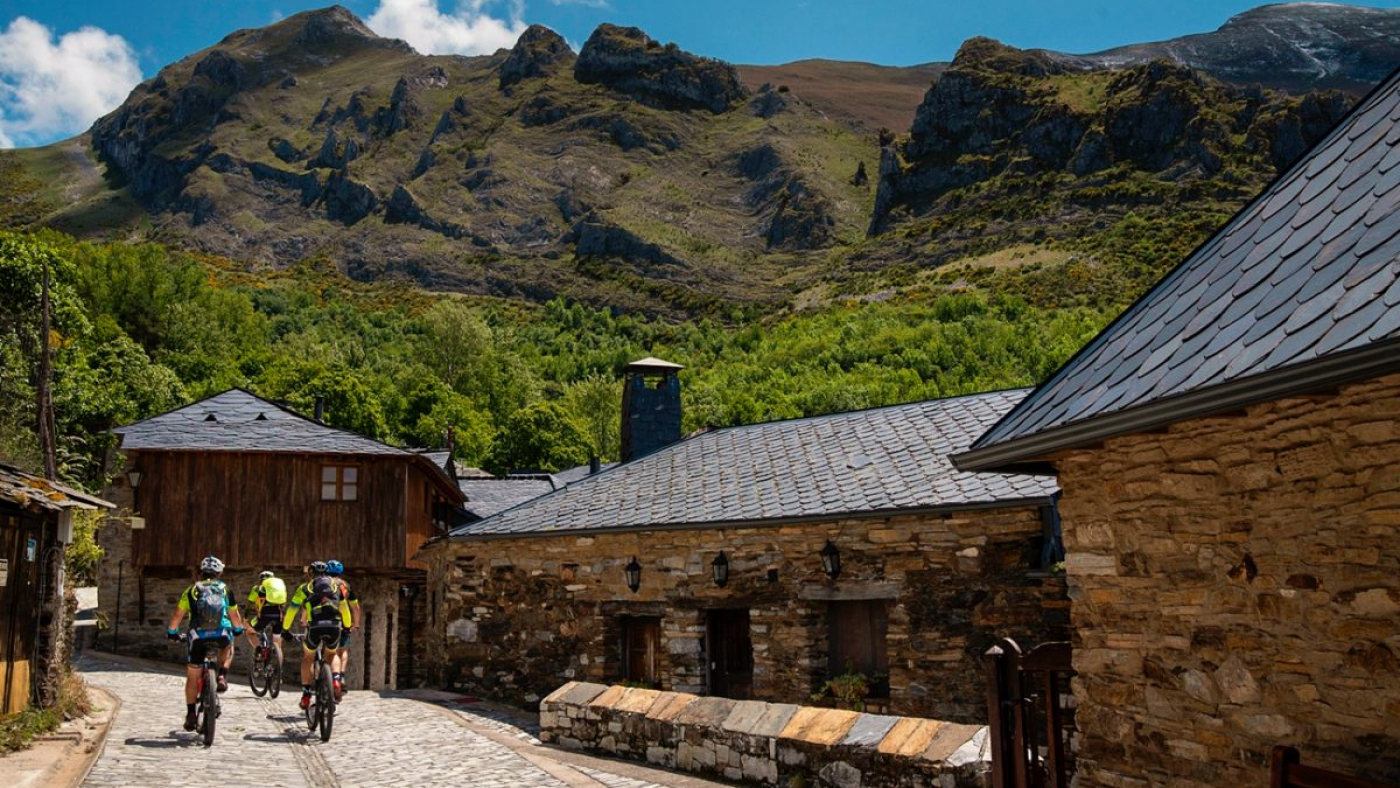Peñalba de Santiago is one of the most iconic villages of the region, located in the valley of the Oza river, better known as the Valle del Silencio (Silence Valley). It is in the middle of the large forests of chestnut and oak trees that the traditional Peñalba de Santiago housing style can be found. It is formed by an agglomeration of stone houses with slate roofs and wooden balconies in the form of a corridor, which run staggered towards the valley.
Peñalba de Santiago is a medieval town that was considered monumental heritage in 1976, where one can enjoy a great landscape and the monumental beauty of its architecture as well as the tranquility offered by the majestic Valle del Silencio. Within this beautiful site it should be highlighted the Church of Santiago de Peñalba, one of the masterpieces of the Mozarabic art:
The Church of Santiago de Peñalba is one of the few remaining parts of the old convent of Peñalba de Santiago, founded in 916 by San Genadio and used as a place of recollection. The monastery did not last for long, disappearing in the 12th century.
Nowadays, only the Church remains well preserved in spite of its antiquity. The Church was built after the Monastery, having been consecrated in 975 and later restored between 1968 and 1976. Due to its dimensions it is considered as a small church, however demonstrating a very well harmonized and proportionate set. The temple has a central nave with a rectangular base, divided into two bodies, to which small units used as a sacristy are attached. Therefore, the church takes the form of a false Latin cross. It is oriented from East to West, holding a beautiful entrance framed by an alfiz, with two twin horseshoe arches in a clear sign of byzantine influence. On the inside, the canyon dome (also of a marked byzantine influence) and the nine columns of white marble and granite should be highlighted.
On the outside of the temple we can highlight the door of the church, which consists of two geminated horseshoe arches on three columns of attic-based marble, and capitals of acanthus leaves under triple nacela crest, which forms a unique set in the whole world.
It should also be stressed the numerous paintings and inscriptions inside, which have been covered by the inconvenient plaster interventions that the temple has had along the time. As a symbol of the temple we can contemplate the 10th century Votive Cross of Azófar offered by Ramiro II, which has an inscription dedicated to the Apostle Santiago. This cross is currently being exhibited in the Provincial Museum of León.
Recently named one of the most beautiful villages in Spain and declared of Site of Cultural Interest in 2008, Peñalba is famous for its beautiful network of ancient typical streets and houses, its Mozarabic church and its enviable location in-between the Bierzo mountains.


